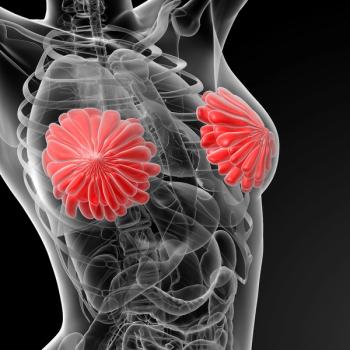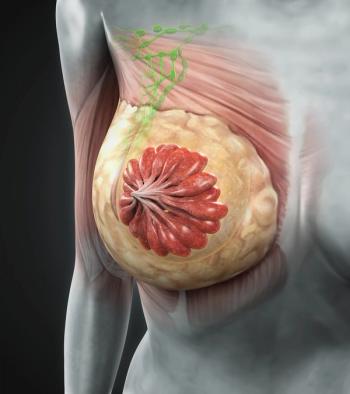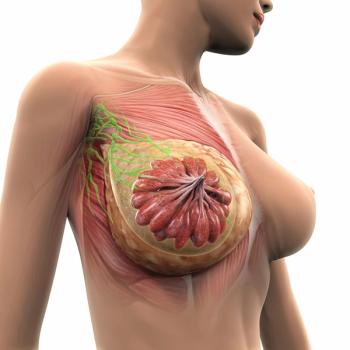
AZURE trial reveals no benefit with zoledronic acid with adjuvant therapy in stage II/III disease
Although there was no benefit for Zoledronic acid overall, the researchers reported significantly improved disease-free survival and overall survival in women who were more than five years postmenopause. Adjuvant bisphosphonate efficacy may be dependent on low estrogen concentration within the bone microenvironment, according to Robert Coleman, MD.
SAN ANTONIO-Adjuvant use of zoledronic acid (Zometa) did not improve disease-free survival (DFS) in stage II/III breast cancer patients treated with adjuvant chemotherapy, according to the long-awaited results of the AZURE* trial, but a key planned subgroup analysis showed a significant benefit in women five years postmenopause.
The trial included 3,360 patients from 174 centers in England who were randomized to receive adjuvant chemotherapy and/or endocrine therapy plus or minus zoledronic acid at 4 mg IV every three to four weeks for six doses. The dose was then tapered down to every three months for eight doses and then every six months for five doses to complete five years of treatment.
Patients were similar in both arms of the study, including tumor stage, number of positive axillary nodes, chemotherapy type, estrogen-receptor status, menopausal status, and statin use. A total of 3,208 patients (96%) received adjuvant chemotherapy (93% anthracyclines, 23% taxanes); 152 patients received endocrine therapy alone. There were 1,665 patients in the zoledronic acid treatment arm and 1,675 controls.
The addition of zoledronic acid to standard treatment did not significantly impact the delivery of chemotherapy. Serious adverse events were similar in both treatment arms, although there were 17 confirmed cases of osteonecrosis of the jaw in the zoledronic acid arm (P < .0001). As of October 18, 2010, with a median follow-up of 5.9 months, there had been 752 DFS events (377 in the zoledronic acid group vs 375 in the control group).
For DFS, the adjusted hazard ratio (HR) was 0.98 (P = .79), reported Robert E. Coleman, MD, from Weston Park Hospital, University of Sheffield, UK. For invasive disease-free survival (IDFS), the adjusted HR was also 0.98 (P = .73). First IDFS events were similar in both arms, such as locoregional recurrence (66 cases in the zoledronic acid arm and the control group) and distant recurrence (266 cases in the zoledronic acid arm and 265 in controls). Overall survival data showed a 15% reduction in risk of dying with zoledronic acid, but this did not reach significance (P = .07) (
Of the planned subgroup analyses, “one clearly stands out,” Dr. Coleman said; i.e., the analysis based on menopausal status: pre- and perimenopausal women vs women with established menopause (more than five years postmenopause or older than age 60 if status known). This was not a small group, with 1,101 women who were five years postmenopause.
In terms of DFS, younger patients received no benefit from zoledronic acid, but those women with established menopause clearly benefited on heterogeneity testing (P = .001). Dr. Coleman called this P value “remarkable” and “rarely seen in subgroup analysis comparisons.”
For overall survival, the adjusted HR was 1.01 for the premenopausal group and 0.71 for the established postmenopausal women, a significant 29% improvement (P = .017). Dr. Coleman stressed this was a secondary outcome, so it could not be considered conclusive. However, he said, “to see a survival advantage like this is quite remarkable, and the difference in outcome between this group and the younger population is unlikely to be a chance finding. We will clearly want to investigate further in this population. This was an unexpected effect.”
Based on this finding, he suggested that adjuvant bisphosphonate efficacy may be dependent on low estrogen concentration within the bone microenvironment.
The AZURE results are different from those observed in the ABCSG-12 trial, which demonstrated a 32% risk reduction in DFS events with zoledronic acid. The ABCSG-12 trial used a cohort of premenopausal women treated with endocrine therapy and had a median follow-up of 62 months.
In an invited commentary, Sharon H. Giordano, MD, MPH, from Houston’s M.D. Anderson Cancer Center offered implications for patient care from the AZURE results:
- Routine adjuvant use of zoledronic acid to prevent recurrence is not indicated
- Differences in outcome by menopausal status are intriguing but not definitive
- Bisphosphonates continue to have an important role in treating bone loss among women with breast cancer
*AZURE = Adjuvant Zoledronic Acid to Reduce Recurrence
Newsletter
Stay up to date on recent advances in the multidisciplinary approach to cancer.
































































































